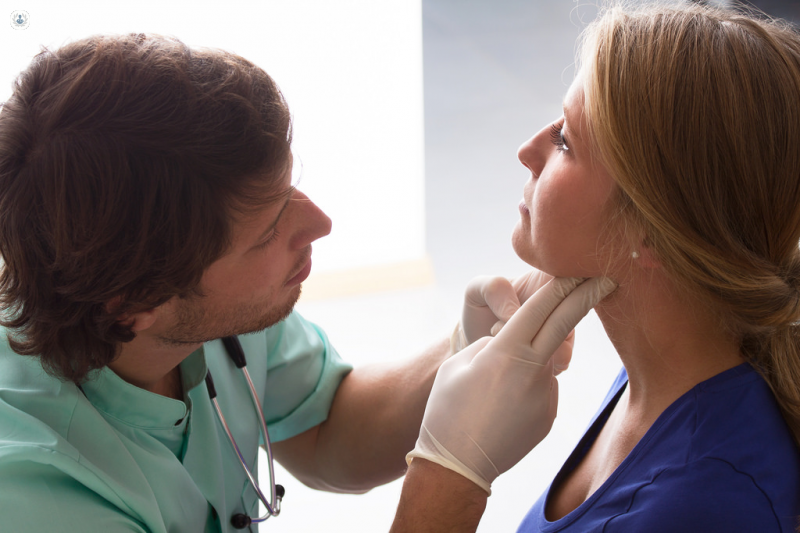Cara sonrojada
What is a flushed face?
A flushed face or blushing is sudden reddening of the face, which can also affect the neck and upper chest. The redness can manifest as red patches or blotchiness and is caused by increased blood flow to the face, causing blood vessels to enlarge. The enlarged blood vessels cause the face to go red.

A flushed face is often the result of anxiety, stress, embarrassment, or even spicy foods, but it could also be the result of an underlying medical condition, such as rosacea, Cushing disease or a niacin overdose. If you experience recurring, unexplained flushing, seek medical attention.
What are the symptoms of a flushed face?
- Red face, neck and upper chest
- Skin rash
- Red patches or blotchy red skin
- A sensation of being too warm
How is a flushed face diagnosed?
It’s important to visit your doctor if you experience recurring episodes of flushing that are unexplained, as it can be linked to certain medical conditions. Your doctor will ask you about the frequency of your symptoms, duration and whether or not other symptoms accompany the flushing. By looking at your medical history and with a careful medical examination, your doctor will be able to diagnose the underlying cause of your symptoms.
What causes a flushed face?
Sometimes a flushed face is simply due to anxiety, stress, nervousness, embarrassment or a fluctuation in hormones that occurs with the menopause, however, sometimes there are underlying medical reasons for it, such as:
- Rosacea; a skin condition that causes redness, swelling and acne-like sores
- Fifth disease; caused by a virus that results in a red rash on the skin
- Agoraphobia; an anxiety disorder causing people to avoid places where they fell trapped or embarrassed
- Scarlet fever; a red rash all over the body that occurs with strep throat
- Hyperthyroidism
- Pyelonephritis; an infection of the urinary tract and kidneys
- Cluster headaches
- Yellow fever; a serious flu-like virus spread by mosquitoes
- Autonomic hyperreflexia; this is a medical emergency condition, whereby the nervous system overreacts to external stimuli, one symptom is skin flushing
- Cushing syndrome: where there are high levels of the stress hormone cortisol in the body
- Niacin overdose: this is vitamin B3 and an overdose can cause redness, this can happen with cholesterol-lowering medication containing niacin
- Sunburn
Can a flushed face be prevented?
Certain steps can be taking to prevent episodes of flushing, which are not related to an underlying condition, such as:
- Limiting alcohol intake
- Limiting niacin intake
- Avoiding spicy foods and hot drinks
- Avoiding too much sunlight
- Avoiding extreme cold or heat
- Employing coping skills to regulate emotions that may trigger flushing
How can a flushed face be treated?
If flushing is caused by emotional responses to stressful situations, then addressing these emotions and developing coping skills will help. If the flushing is caused by spicy foods, alcohol or extreme heat and cold, then avoiding or limiting these will prevent the flushing from occurring.
If the cause is an underlying medical condition, the underlying condition will be addressed and treated accordingly.